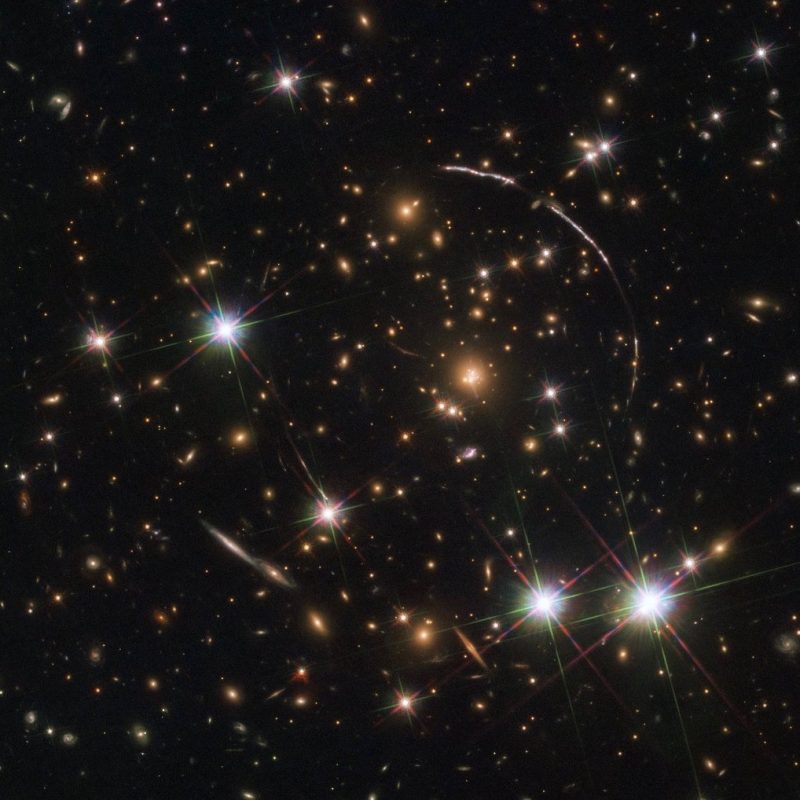Hubble captures a dozen galaxy doppelgangers
Eleanor Imster in SPACE | November 13, 2019
The distant galaxy in this image is nicknamed the Sunburst Arc. It’s been lensed into multiple images by a massive, intervening galaxy cluster. A recent study revealed that the 4 bright arcs in this Hubble image contain 12 images – cosmic doppelgangers – of the galaxy, which is 11 billion light-years away.

A Hubble Space Telescope image of the 4 visible arcs associated with the Sunburst Arc galaxy. This exceedingly distant galaxy helps create one of the brightest gravitational lenses known. Within these 4 visible arcs are at least 12 images – 12 doppelgangers, or illusory images – of the galaxy. Image via ESA/NASA/E. Rivera-Thorsen et al. |
Scientists recently studied the Sunburst Arc, using the Hubble Telescope. Their peer-reviewed study revealed the 12 doppelganger galaxies within those four arcs of light. The study was published in the journal Science on November 8. A statement at SpaceTelescope.org explained:
The mass of the galaxy cluster is large enough to bend and magnify the light from the more distant galaxy behind it. This process leads not only to a deformation of the light from the object, but also to a multiplication of the image of the lensed galaxy.
In the case of the Sunburst Arc, the lensing effect led to at least 12 images of the galaxy, distributed over four major arcs. Three of these arcs are visible in the top right of the image [above], while one counterarc is visible in the lower left — partially obscured by a bright foreground star within the Milky Way.
These scientists said that, using the Hubble Telescope and the effect of gravitational lensing – the bending of the light of distant objects in space by massive intervening objects – they can study distant objects otherwise too faint and too small even for Hubble’s instruments. That’s because, they said:
The lens makes various images of the Sunburst Arc between 10 and 30 times brighter.
This brightening via gravitational lensing lets the Hubble telescope view structures within the very distant galaxy as small as 520 light-years across! That’s an incredibly rare, detailed observation for an object 11 billion light-years away. In fact, that resolution – the seeing of features as small as 520 light-years across – compares reasonably well, these astronomers said, with star forming regions in galaxies in the space near our own Milky Way galaxy.
So the gravitational lensing effect of the Sunburst Arc gives astronomers a window on the very early universe. That’s because, as we all know, a galaxy that’s 11 billion light-years away is seen – not as it is now – but as it was 11 billion years ago. The astronomers said this essential fact about our universe – which happens because light doesn’t travel infinitely fast, but instead at a finite speed (186,000 miles per second or 299,992 km/s) – is letting these astronomers study a time in the early universe known as the epoch of reionization. That epoch began only 150 million years after the Big Bang. To learn more about that aspect of this study, read toward the bottom of the astronomers’ statement.
Don’t we live in an interesting universe?













 Reply With Quote
Reply With Quote